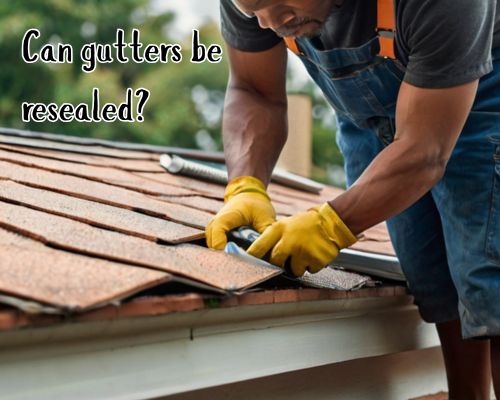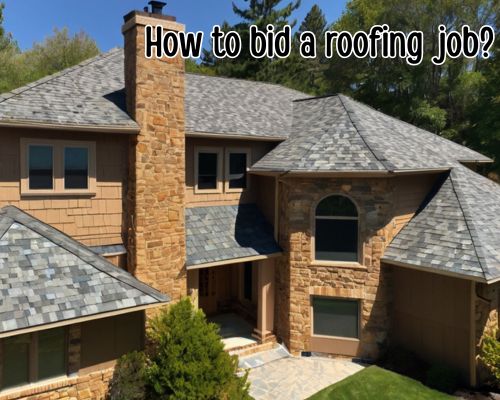Can Gutters Be Resealed? A Homeowner’s Guide for Melbourne, Australia

Can Gutters Be Resealed? A Homeowner’s Guide for Melbourne, Australia
When Melbourne’s famously unpredictable weather rolls in—sunshine one hour, downpours the next—your gutters are the unsung heroes protecting your home from water damage. But what happens when they start leaking? Many homeowners immediately think replacement is the only solution. However, can gutters be resealed? Absolutely. And in Melbourne, resealing gutters can be both a cost-effective and smart preventative measure.

With Gutter Cleaning Melbourne, we’ll explore why resealing your gutters is an option worth considering, how it’s done, what signs to look out for, and what it typically costs in Melbourne, while also covering essential local considerations that impact your home’s water drainage system.
Why Do Gutters Leak in the First Place?
Before diving into solutions, it’s crucial to understand what causes gutters to leak. Common culprits include:
- Aging sealant between gutter joints and seams
- Thermal expansion and contraction, especially during Melbourne’s fluctuating temperatures
- Corrosion in metal gutters, particularly in older properties across Melbourne’s inner suburbs like Brunswick or St Kilda
- Improper installation or separation at joints
- Blockages from eucalyptus leaves and other debris
Identifying the root cause helps determine whether a reseal will be effective or if a replacement is necessary.
So, Can Gutters Be Resealed?
Yes—gutters can absolutely be resealed, provided they are structurally sound. This applies to both metal and vinyl gutters, including aluminium, colorbond, and zincalume options that are popular throughout Melbourne homes. Resealing involves cleaning the joint or seam thoroughly, applying a premium-grade waterproof sealant, and allowing it to cure properly.
This method is particularly useful for:
- Isolated leaks at gutter seams or corners
- Prevention of future water ingress in aging systems
- Extending gutter lifespan by 5–10 years, depending on maintenance
Benefits of Resealing Gutters in Melbourne
1. Cost-Effective Solution
Compared to full gutter replacement, resealing can be done at a fraction of the cost. For a typical three-bedroom home in the eastern suburbs like Box Hill or Camberwell, resealing selected joints may cost between $150–$400, depending on accessibility and gutter length.
2. Minimal Disruption
Resealing takes less time than replacing full sections of guttering, making it ideal for inner-city dwellings with limited access or heritage overlays.
3. Adaptability to Local Conditions
Melbourne’s variable rainfall and strong UV exposure mean gutters face a lot of wear and tear. High-performance polyurethane or silicone sealants used by local roof plumbers are selected to withstand these exact conditions.
Signs Your Gutters Need Resealing
Not sure if a reseal is right for your home? Look for these key indicators:
- Dripping water from gutter joints or corners
- Stains or water marks on fascia boards
- Peeling paint or signs of wood rot beneath gutters
- Overflow during light rain, often due to hidden joint leaks
- Persistent damp patches around the base of the house
Professional roofing inspections from licensed gutter specialists in Melbourne—like those operating in Frankston, Dandenong, or Doncaster—can quickly confirm if resealing is viable.
DIY vs. Professional Gutter Resealing
While resealing may sound like a tempting DIY project, Melbourne homeowners should weigh the pros and cons.
DIY Resealing:
- ✅ Cheap and accessible (sealant costs $15–$30 per tube)
- ✅ Basic tools required (gloves, ladder, brush)
- ❌ Requires thorough cleaning and drying for proper adhesion
- ❌ Risks improper sealing or overlooking deeper issues like rusted brackets or sagging
Professional Gutter Repair:
- ✅ Full inspection for leaks, corrosion, blockages, and alignment
- ✅ Use of industry-grade sealants and safety protocols
- ✅ Warranties on workmanship
- ❌ Higher upfront cost
Melbourne’s regulations also require licensed roof plumbers for certain heights and structural works, especially in multi-storey homes or commercial properties.
Localised Challenges for Gutter Maintenance in Melbourne
Gutters in Melbourne face specific challenges due to regional conditions:
- Eucalyptus leaves and acorns clog downpipes quickly, especially in tree-heavy suburbs like Eltham or Greensborough
- Seaside suburbs like Brighton face accelerated corrosion from salt-laden air
- Frost exposure in elevated areas like the Dandenong Ranges can cause microfractures in sealant
Opting for resealing as part of seasonal gutter maintenance—especially before the June-August rain peak—can save thousands in future repairs.
Best Types of Sealants for Melbourne Homes
Melbourne’s climate calls for UV-resistant and waterproof sealants that can handle:
- Hot summers (up to 45°C in outer suburbs)
- Sudden rain bursts (common during spring)
- Frosty winter mornings
Roofing professionals in Victoria recommend:
- Neutral-cure silicone – excellent for metal, doesn’t corrode aluminum
- Polyurethane-based sealants – flexible and long-lasting
- Bitumen-based sealants – good for temporary repairs in emergencies
Local suppliers such as Bunnings Warehouse or Tradelink stock suitable options, and roofing professionals often use brands like Selleys Roof & Gutter Silicone or Gripset Betta Seal.
When Not to Reseal Gutters
While resealing is effective, it’s not a silver bullet. You should avoid resealing if:
- Gutter sections are visibly sagging
- You see widespread rust or pitting
- The existing sealant has failed in multiple areas
- There’s persistent pooling or poor water flow
- Your home’s guttering system is over 15–20 years old and hasn’t been updated
In such cases, a full gutter replacement—possibly with modern Colorbond gutters and integrated leaf guards—may be a better long-term investment.
Gutter Resealing: Local Professionals in Melbourne
If you’re unsure where to start, Melbourne is home to many reputable gutter repair and roofing specialists. Look for:
- Licensing through the Victorian Building Authority (VBA)
- Membership in the Master Plumbers Association of Victoria
- Verified reviews on local platforms like HiPages or Oneflare
- Warranty offerings (minimum 6–12 months on sealant work)
Common service areas include Melbourne CBD, Sunbury, Mornington Peninsula, and the Yarra Valley. For professional needs, go to Gutter Cleaning Melbourne.
Final Thoughts: Can Gutters Be Resealed in Melbourne?
Absolutely, gutters can and should be resealed when showing early signs of leakage. It’s an affordable, efficient, and locally relevant solution that’s ideal for Melbourne’s diverse climate conditions. By addressing leaks early, homeowners can avoid significant water damage, maintain their property’s value, and extend the life of their gutter system.
Whether you opt for DIY or bring in a professional, make resealing a part of your annual home maintenance checklist, especially in preparation for the rainy season. And if you’re ever in doubt, get a second opinion from a local expert—after all, water waits for no one in Melbourne.







